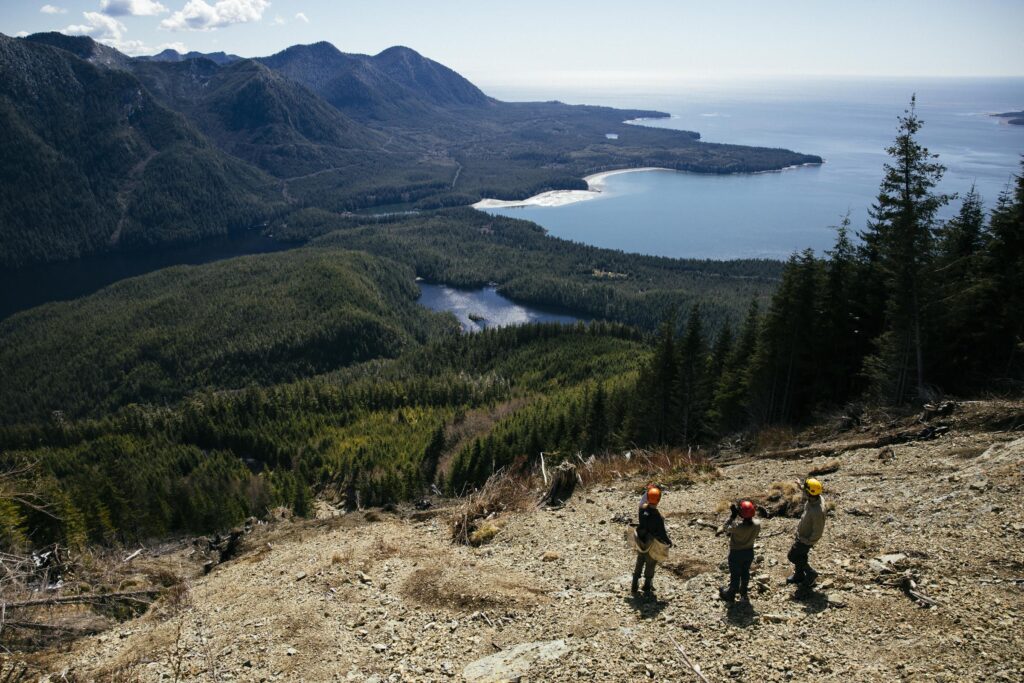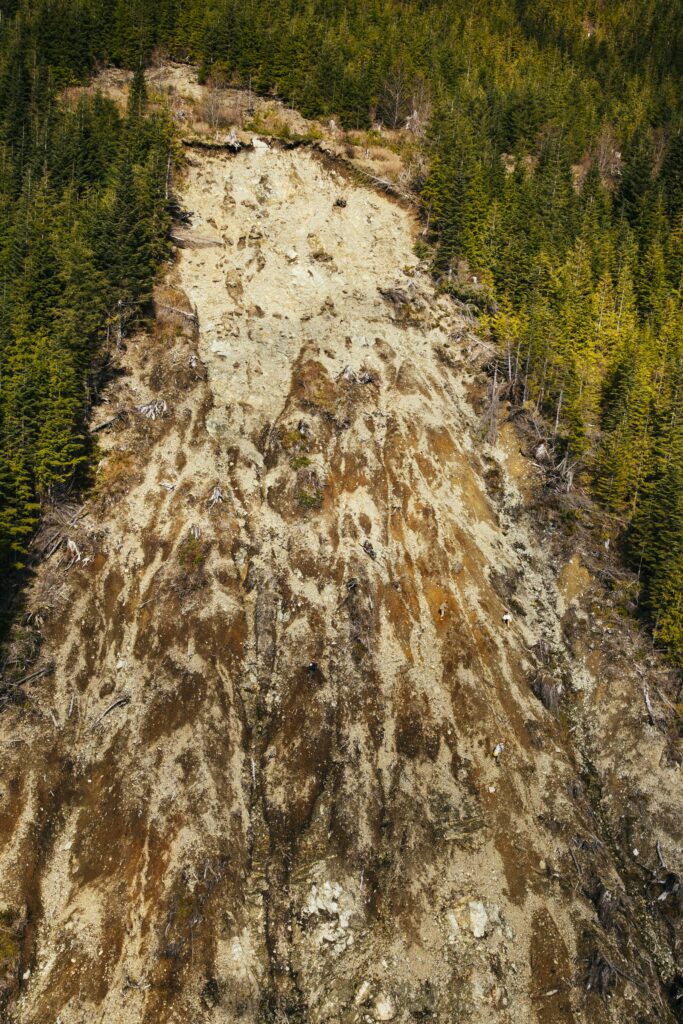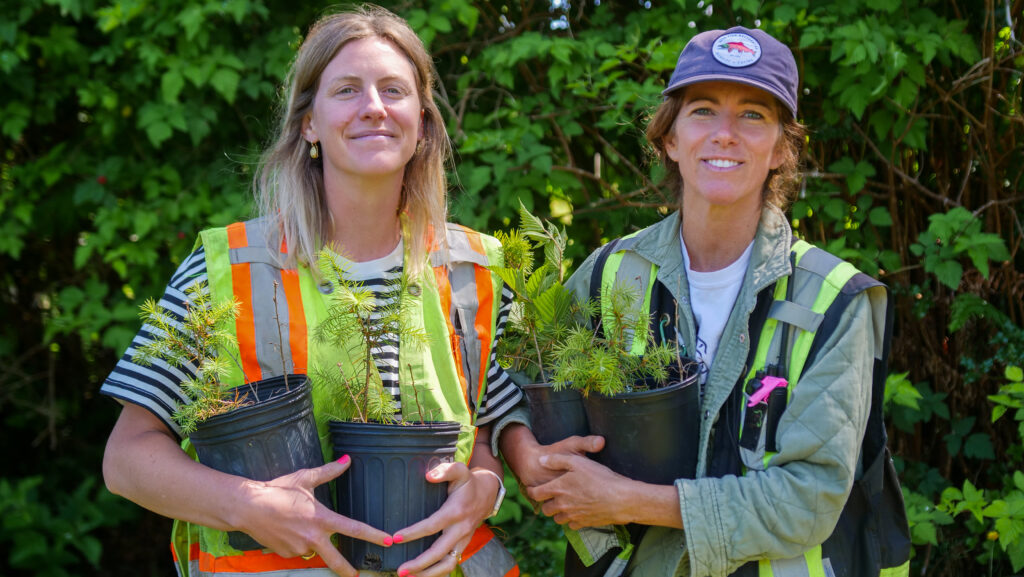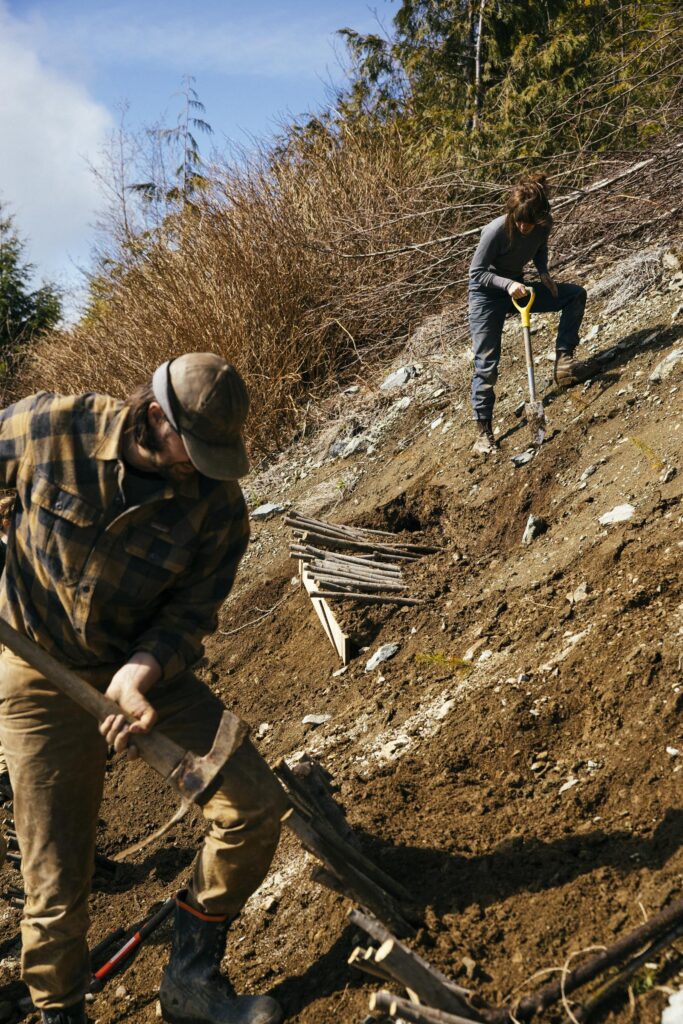Act Locally: How to help nature by preventing erosion in your community
Erosion happens when wind or water wears down and moves minerals, rocks and soils. It’s meant to be a slow and natural process, but certain factors — such as human activities and climate-fuelled extreme weather — can accelerate it. When this occurs, it can damage sensitive ecosystems, inhibit plant growth and displace species.
The Redd Fish Restoration Society has been working to battle erosion for nearly three decades.

The organization — one of six supported by WWF-Canada’s Nature and Climate Grant Program, presented in partnership with Aviva Canada — works closely with local First Nations to restore degraded habitats surrounding Tofino, B.C., on the northwestern edge of Vancouver Island. Intense logging in the 20th century stripped many local mountain slopes of trees and shrubs. This has led to hundreds of landslides which have damaged soil integrity, habitats and waterways, including the spawning grounds of five at-risk salmon species
Redd Fish is using nature-based climate solutions to restore the health of these vital watersheds, one eroding slope at a time. We talked to Redd Fish’s Executive Director and Ecologist Jessica Hutchinson and Director of Operations Mandala Smulders to understand why it’s important to prevent erosion, how to do it in a nature-friendly way, and what you can do to keep your local shores stable.
How does erosion impact the habitats you serve?
JH: We work on steep mountainsides where massive, 300-metre by two-kilometre landslides have occurred. The scale of erosion on these watersheds is very intense.

In our watersheds, loggers hit the valley bottoms first, back in the 1950s, because the biggest trees were along the salmon corridors. By the end of the 1970s, they’d basically logged almost all of the river valleys so, in the 1980s, they moved up into this steep upper watershed, where logging should have really never occurred. In 1990s, there were a lot of really intense rain and weather events, caused by a changing climate, which led to a large number of landslides during that time. Our organization came out of that time because people were seeing that immediate degradation.
Today, in the hišqʷiʔatḥ (Hesquiaht) watershed alone, we’re working to restore more than 420 landslides, of which 97 per cent were caused by forestry and road-building operations. In the Hiłsyaqƛis (Tranquil) watershed — a very large river — the integrity and the stability of the banks has been lost due to the removal of large trees during forest harvesting. Without mature old-growth forests, they are very susceptible to erosion.
In these two very extreme environments, we are working with nature to help mitigate erosion. We’re using plants and vegetation to help stabilize the soils. The goal is to prevent future landslides and future bank erosion from occurring or, in some cases, to mitigate the rate at which it does occur.
What methods do you find most effective in preventing erosion?
JH: To stabilize a landslide or to prevent bank erosion on a river, you can deploy a lot of very aggressive techniques, using concrete, rebar, riprap, or large boulders. But you can also use nature-based solutions — roots and plants have an amazing ability to cling to soil. When raindrops fall on bare soil, it causes erosion [but] a plant can dissipate the energy of those raindrops and absorb some of that water.
Here on the West Coast, we live in a very, very, very, very, very wet region. We receive a lot of rainfall and have very intense rain events [and] because of climate change, the intensity and frequency of these large atmospheric river events are increasing. So, using nature-based solutions and re-establishing biodiversity and plant cover on disturbed soils is more important than ever.
Incredible! Can you tell us how this benefits biodiversity?
JH: As you can imagine, bare soil only provides so much habitat for so many species. By restoring a diversity of native plants and trees to watershed, we’re increasing the available habitat niches and the diversity of habitats available for different species. It really brings back not only the stability and the resilience of these ecosystems, but also the richness and the diversity that historically would have existed there.
The benefits also extend to carbon sequestration and to cooling effects for the river. It’s actually hard to quantify all the benefits of restoring plants to any ecosystem that traditionally held them — there are so many!

You work on very large projects, but erosion occurs on a much smaller scale, too — on the slopes of a city ravine, for example, or the edges of a creek or the banks of a pond. Can nature-based solutions prevent erosion in these settings?
MS: The basic principles of what we do can be done anywhere. I really recommend spending time in your local national or provincial park or conservation area to observe what’s growing in the understory, or the characteristics of the tree canopy.
JH: A lot of restoration work begins with trying to understand and monitor the ecosystem that you’re concerned about. Look for areas where plants are functioning and working well.
MS: Also, before you take any action, it’s very important to speak with professionals — biologists, government agencies or local conservation nonprofits — about what sort of plant species will survive in your ecosystem. For example, we use willow stakes on several of our slopes because it grows fast and spreads its roots extensively. That works in our environments, but you wouldn’t want to use willow in, for example, a small backyard creek because it’d just take over.
JH: I recommend buying a plant guide for your area to understand which plants are there now, and to learn what would have been there historically.
Why is it important to do this homework?
MS: It can help you to determine what your goal is. Are you having excessive erosion problems you want to slow down? If so, maybe you want to plant something that’s fast growing and that likes soils that are not very compact, so it can take off, grow, and hold up those banks. Or is the bank already pretty stable? If so, you can re-vegetate it to make sure it’s going to remain stable.
JH: Building your own knowledge about ecosystems is what’s going to help in the long term. Immediately jumping into planting trees or daisies or whatever may not the best approach. It’s about understanding and learning first, and then finding the best ways to perhaps intervene to help the ecosystem accelerate its recovery.

What is the best advice you can offer for people who want to combat erosion on their own properties?
MS: Remember it’s an ongoing process and usually takes a few years of adding a different species of plants. You might start with willows to stabilize the soil, and then you add in conifers and then you seed it with something else.
JH: Stewardship is a never-ending process. It’s building this connection with a place you love — whether it’s a river, a patch of grass, a small forest or a trail — and then committing to take care of it. Maybe that’s picking up garbage? Maybe that’s native grass seeding every year? Maybe it’s putting up a sign advising people not to walk off a trail on an eroding ravine slope? Whatever the approach, it’s about constant care. Because damages will constantly occur, and if we want ecosystems to function, there needs to be that that level of love.
Act Locally is a blog series about how you can apply the nature-based climate solutions used by our Nature and Climate Grant Program participants to your own life.
More in our Act Locally series:
- How to de-pave your property
- How to make your yard more nature-friendly with native shrubs
- Sowing change: How Canadian farmers are addressing the biodiversity and climate crises
- Act Locally: How to make your yard more nature-friendly with native shrubs
- Restoring Utopia: How one group’s watershed work helps wildlife and hinders climate change
- Meet 6 groups restoring biodiversity (and storing carbon) across the country
Learn more about our Nature and Climate Grant Program

